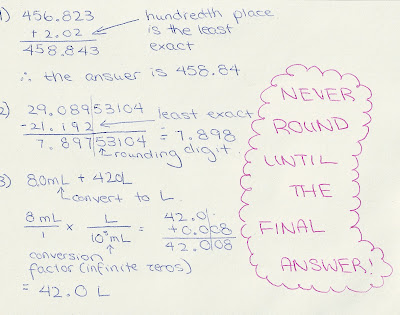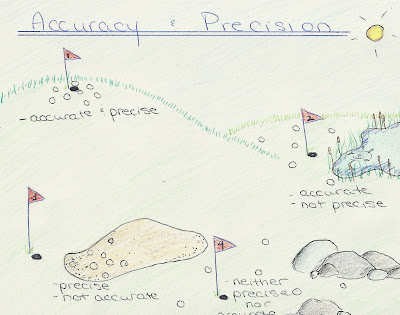- We first started by measuring the mass of our aluminum foil in grams (g).
- Next, we measured the side lengths of the piece of aluminum foil--length (l) & width (w)
- We then used to different formulas- D = M/V (density = mass/volume) & V = l x w x h (volume = length x width x height)
- We were given the estimated density of foil, which is 2.70 g/cm
- Now all that's left to do is plug in your numbers! **listing your knowns and unknowns would be a good idea. It's an excellent way to see the problem clearly**
M = 0.88 g
V = ?
l = 15.59 cm
w = 17.00 cm
h = ?
First step is to solve for V
D = M/V
2.70 g/cm3 = 0.88 g/V <---- divide both sides by 0.88 g
0.326 cm 3 = V
Next solve for height (thickness)
V = l x w x h
0.326 cm3 = 15.59 cm x 17.00 cm x h
0.326 cm3 = 265.03 cm2 x h <---- divide both sides by 265.03 cm2
h = 0.00123 cm <---- write this number in the correct number of sig figs (in this case, 2)
h = 0.0012 cm <---- write it in scientific notation
h = 1.2 x 10-3cm
So through these easy steps, you'll be well on your way to determining a close estimate to the thickness of a piece of aluminum foil! Hoorah!




